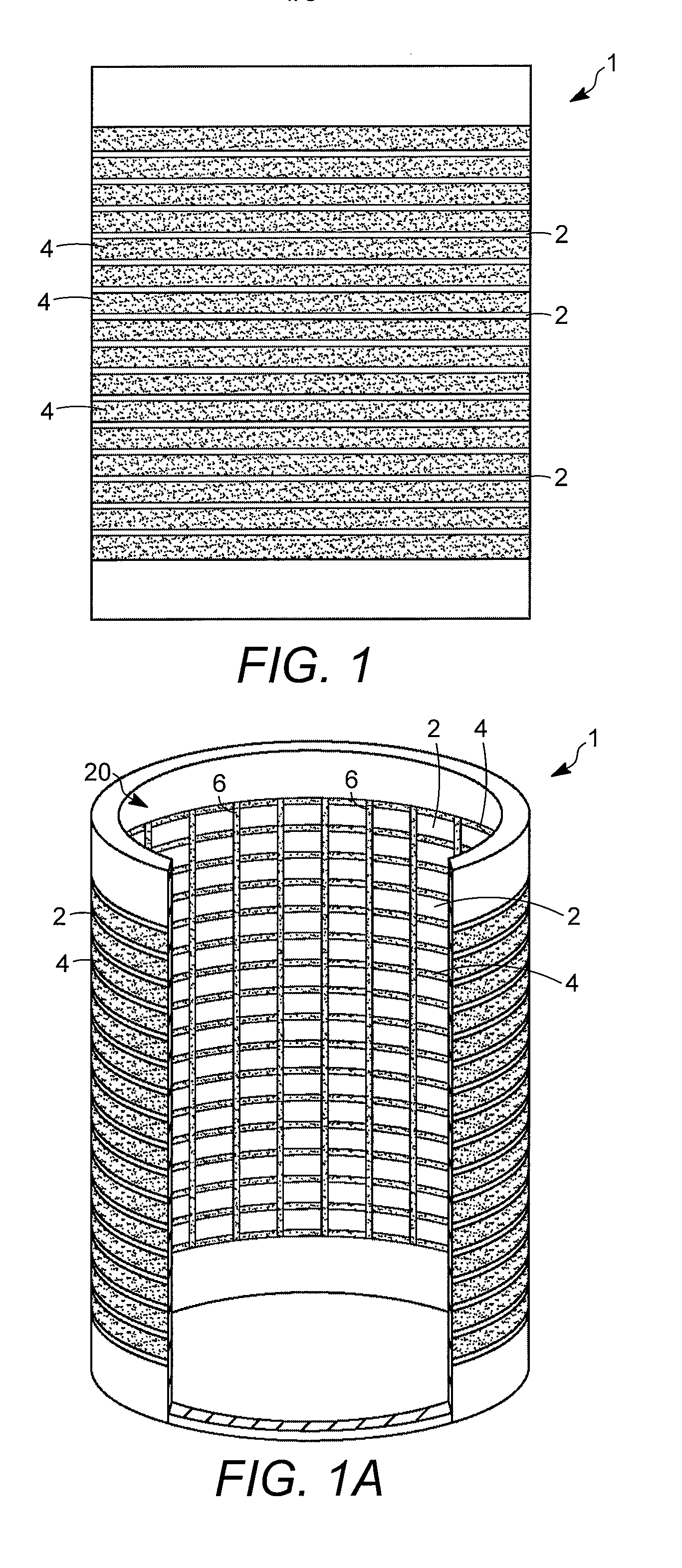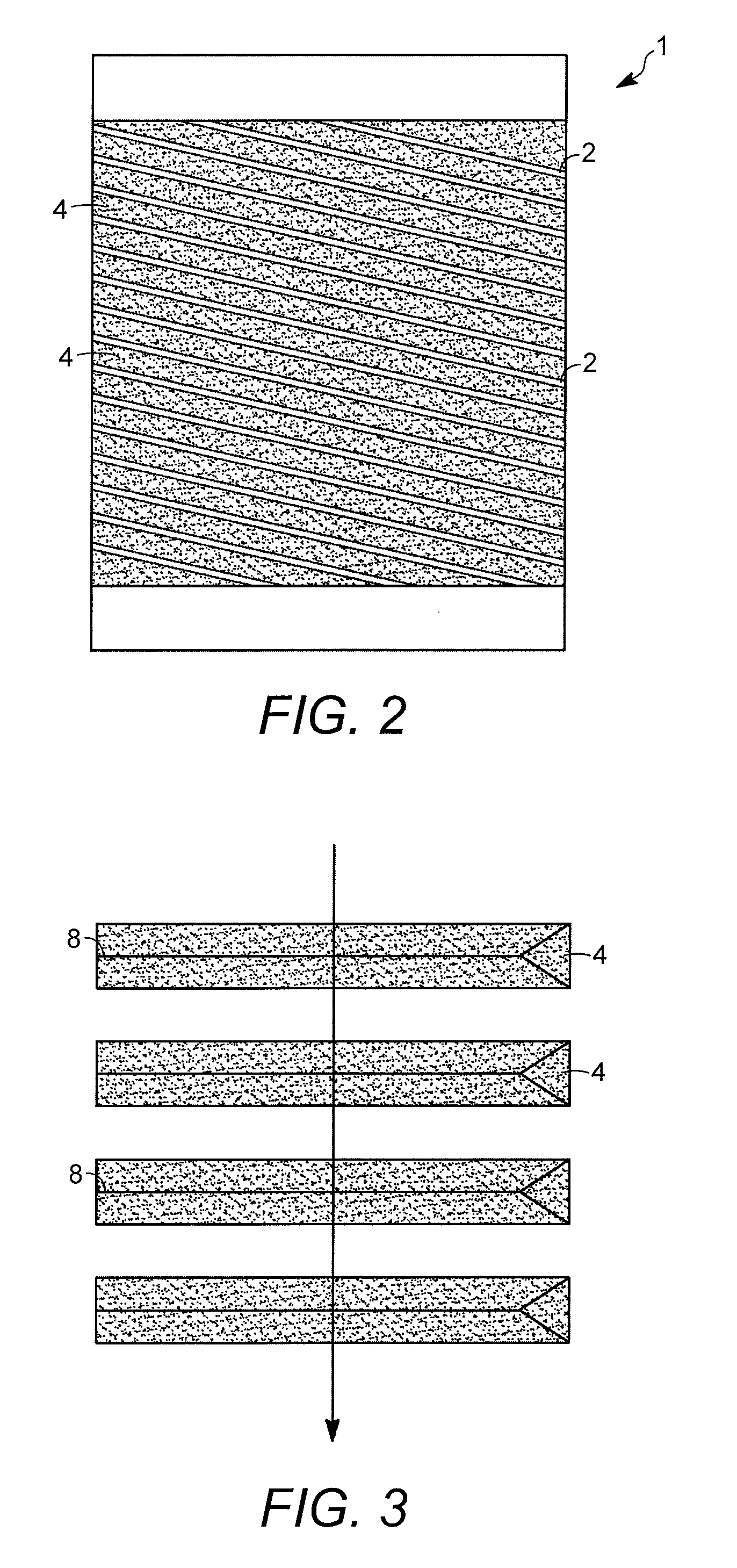Fluid distribution in radial flow reactors including moving bed reactors
a technology of radial flow reactors and moving beds, which is applied in the direction of naphtha reforming, organic chemistry, physical/chemical process catalysts, etc., to achieve the effect of reducing or eliminating the induction of high localized fluid velocity
- Summary
- Abstract
- Description
- Claims
- Application Information
AI Technical Summary
Benefits of technology
Problems solved by technology
Method used
Image
Examples
Embodiment Construction
[0030]Aspects of the invention relate to particle retention devices for use in apparatuses for contacting fluids (e.g., gases, liquids, or mixed phase fluids containing both gas and liquid fractions) with solids that are typically in particulate form (e.g., spheres, pellets, granules, etc.). The maximum dimension (e.g., diameter of a sphere or length of a pellet), for an average particle of such particulate solids, is typically in the range from about 0.5 mm (0.02 inches) to about 15 mm (0.59 inches), and often from about 1 mm (0.04 inches) to about 10 mm (0.39 inches). An exemplary solid particulate is a catalyst used to promote a desired hydrocarbon conversion reaction and normally containing a catalytically active metal or combination of metals dispersed on a solid, microporous carrier. Catalysts and other solid particulates are retained in particle retention devices when the smallest widths of the flow channels, for passage of fluid in the radial direction, are less than the sma...
PUM
| Property | Measurement | Unit |
|---|---|---|
| length | aaaaa | aaaaa |
| length | aaaaa | aaaaa |
| widths | aaaaa | aaaaa |
Abstract
Description
Claims
Application Information
 Login to View More
Login to View More - R&D
- Intellectual Property
- Life Sciences
- Materials
- Tech Scout
- Unparalleled Data Quality
- Higher Quality Content
- 60% Fewer Hallucinations
Browse by: Latest US Patents, China's latest patents, Technical Efficacy Thesaurus, Application Domain, Technology Topic, Popular Technical Reports.
© 2025 PatSnap. All rights reserved.Legal|Privacy policy|Modern Slavery Act Transparency Statement|Sitemap|About US| Contact US: help@patsnap.com



